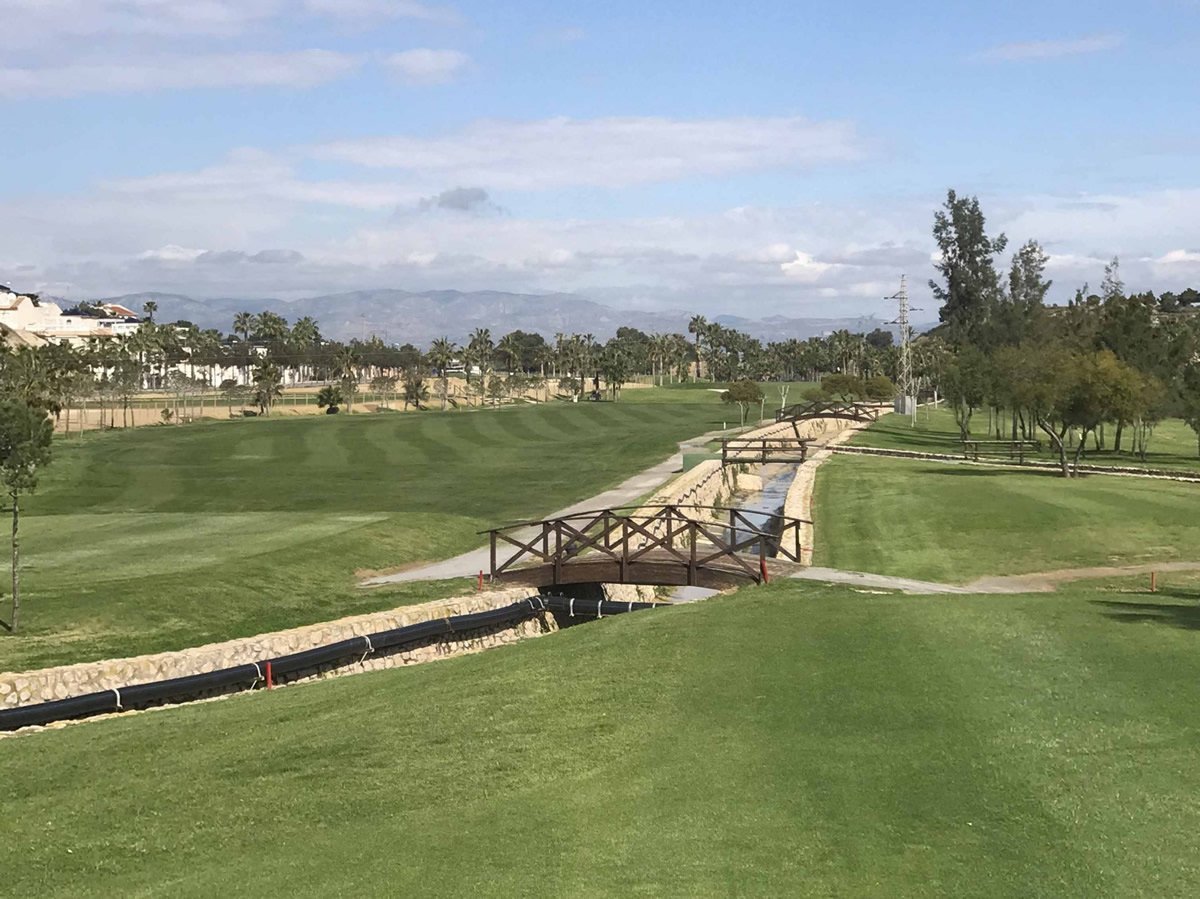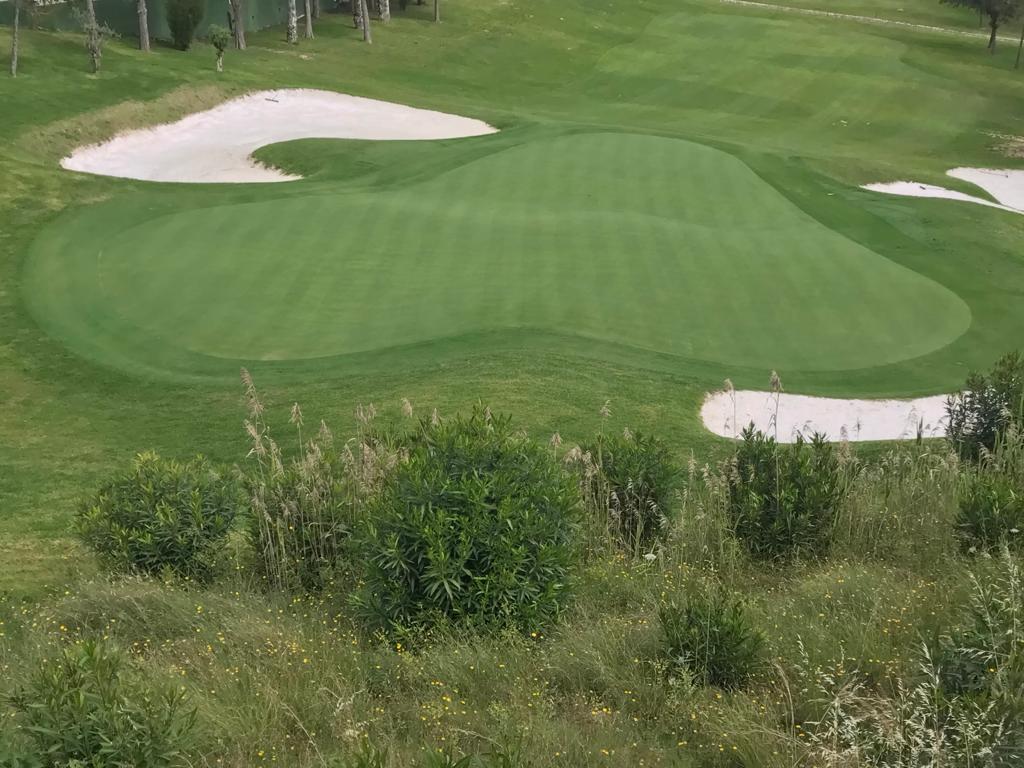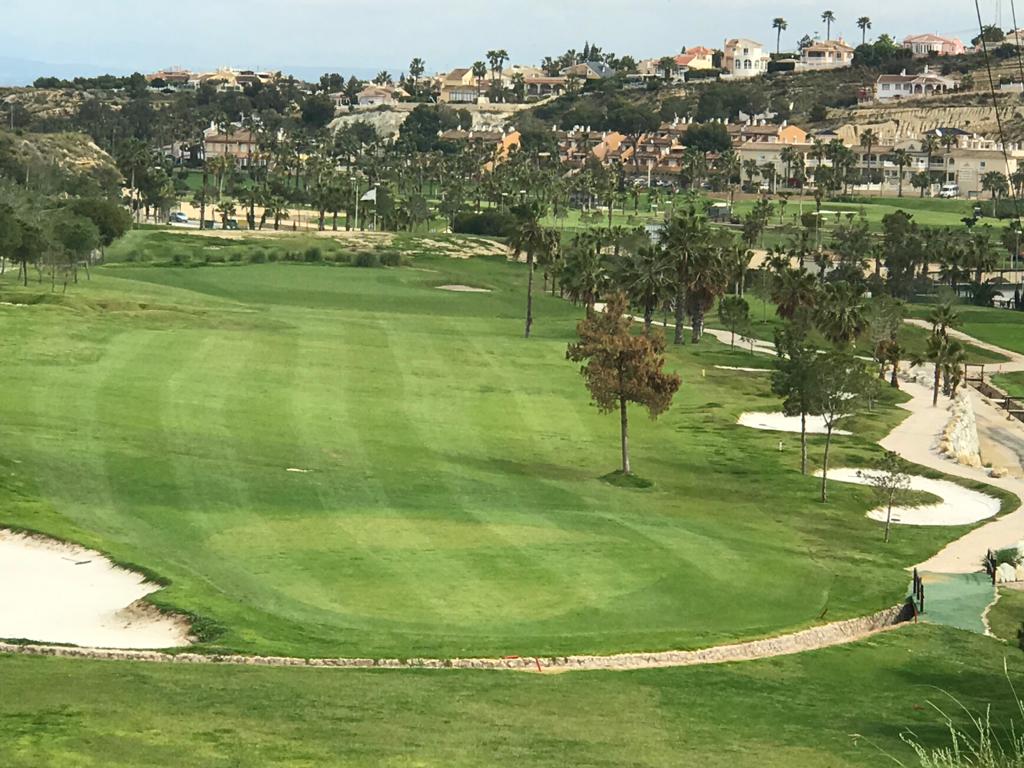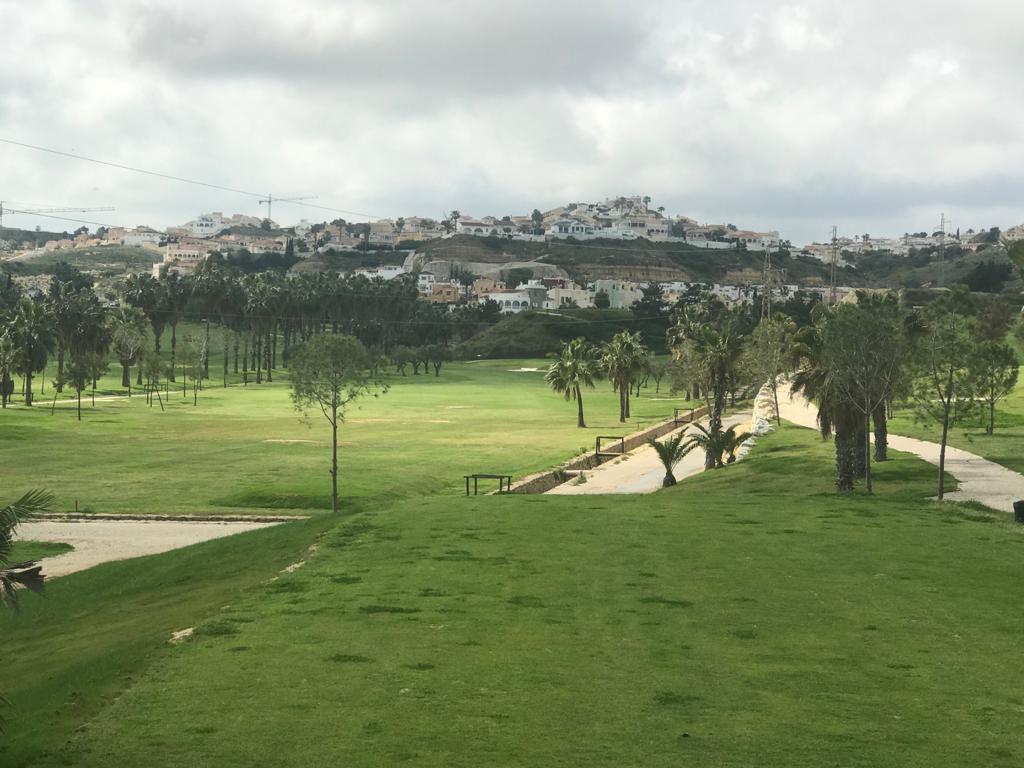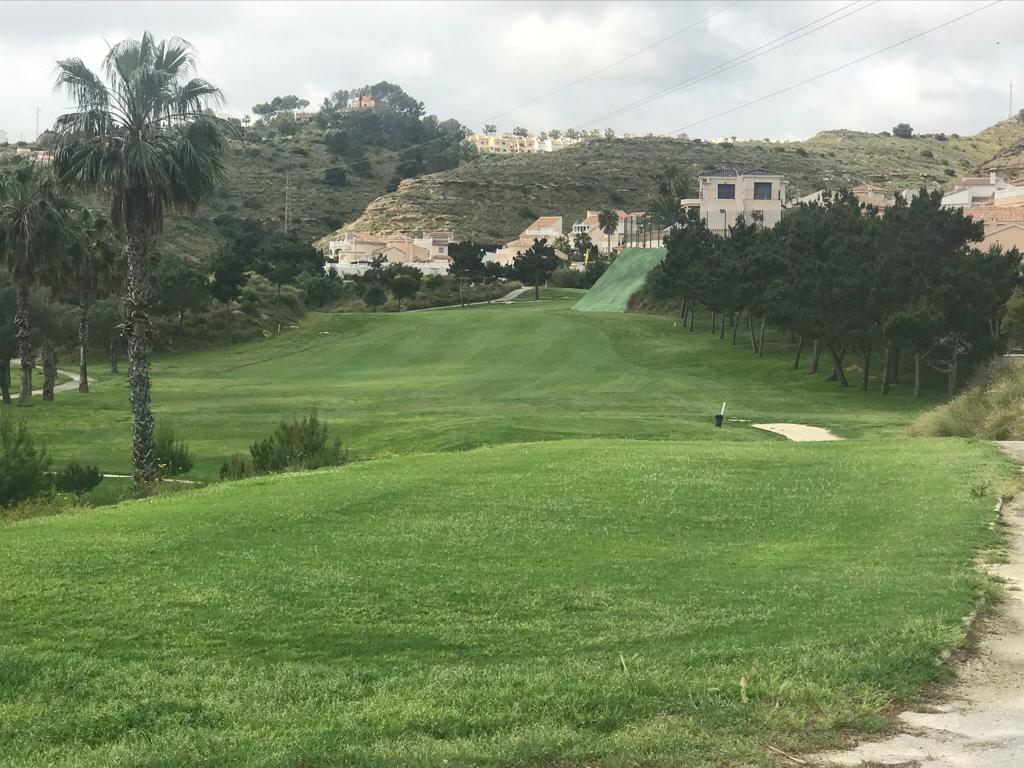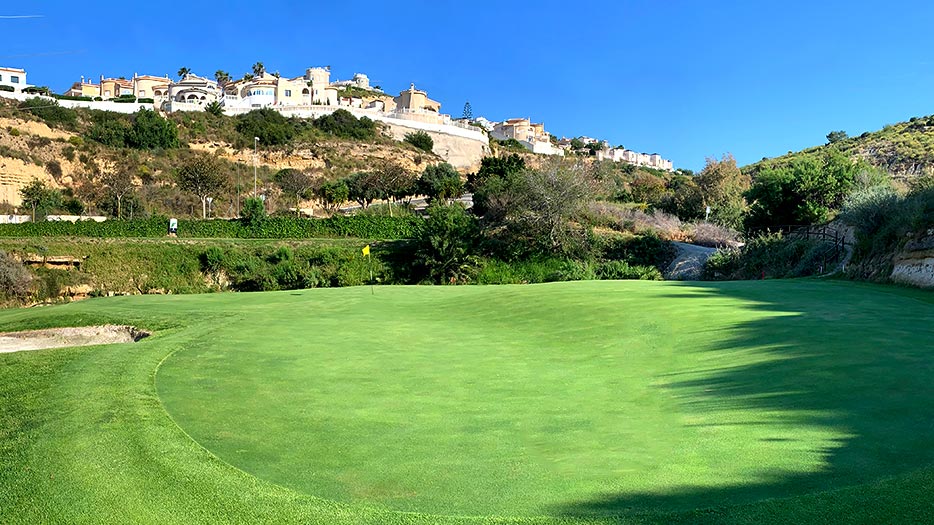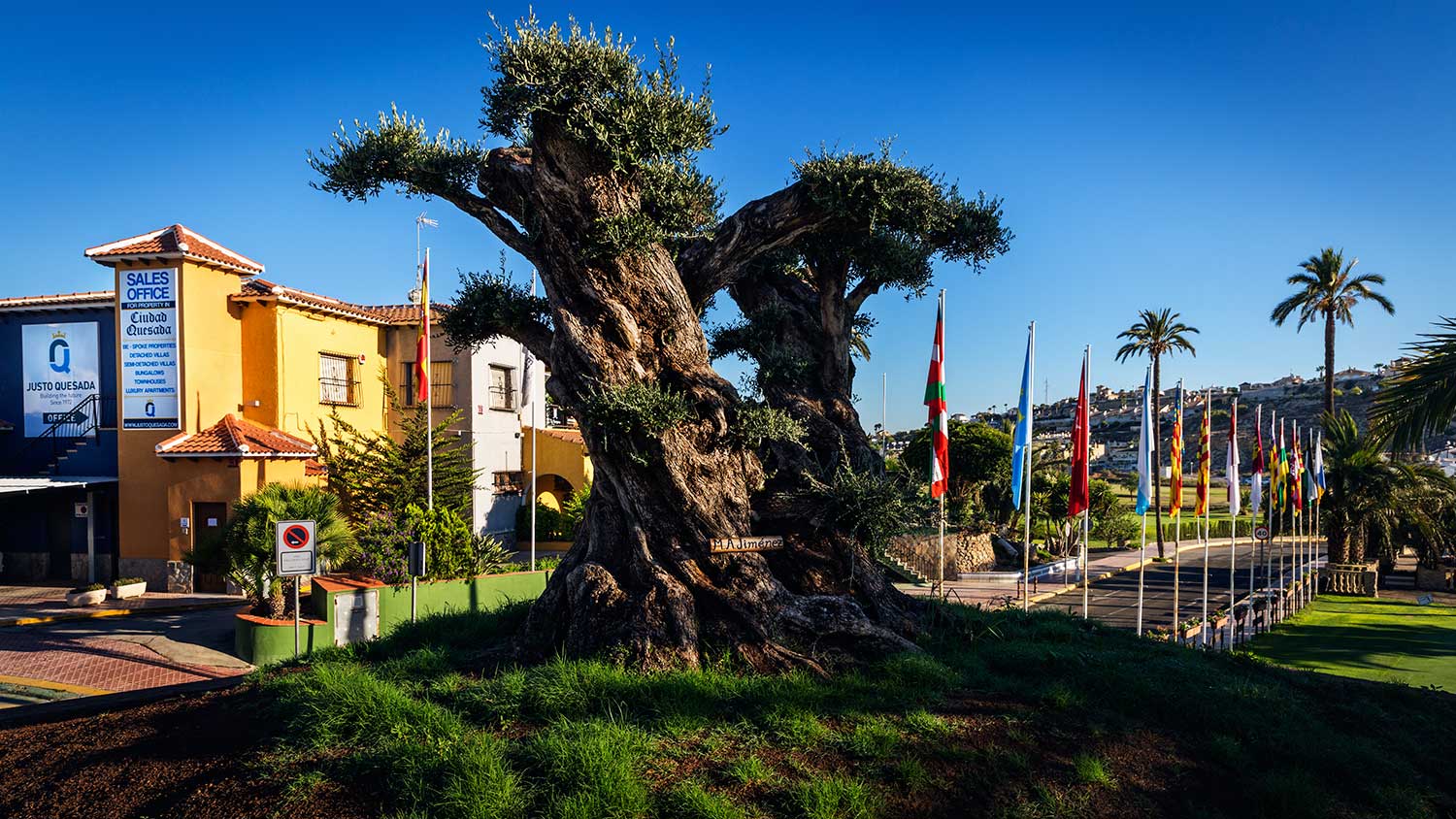Este bonito y exigente hoyo casualmente es el único del recorrido que en sus 30 años en ningún momento cambió su número por consiguiente es merecido bautizarle de forma oficial como El 1.
CÓMO JUGAR ESTE HOYO:
Comienzo exigente, par 4 largo, Fuera de límites por toda la izquierda, area de penalización por la derecha, Green en alto con desnivel medio del 2,60, forma de bumerán, defendido por 4 búnkers, le convierte el hoyo más complicado del recorrido. Imprescindible una buena distancia con el Driver para tener opciones de coger Green de 2, de fallar Green la posición del hoyo puede dificultar más la situación.
Transforma tu teléfono inteligente con nuestro elegante «
coque telephone» y dale una segunda piel que combina protección y estilo. Diseñados para satisfacer tus necesidades, nuestros accesorios para teléfono no solo protegen contra caídas y rayones, sino que también mejoran el aspecto de tu dispositivo. Elige entre una variedad de colores y patrones, para asegurarte de que tu teléfono inteligente refleje tu estilo único. ¡Actualízalo hoy y experimenta la combinación perfecta de funcionalidad y moda!
Se trata de uno de los 9 greenes nuevos, con forma de corazón sin ningún motivo concreto de su forma, tan solo, realizar un green con un diseño especial. Para ver dicha forma obviamente, debe de ser visto desde una posición alta donde apreciar la forma de Corazón.
CÓMO JUGAR ESTE HOYO:
Par 5 de longitud media, Fuera de límites por toda la derecha, calle estrecha, desnivel notable hacia la izquierda, motivos suficientes para guardar la ropa alinearse a la izquierda de primer golpe. Segundo golpe ciego donde hay que evitar una ría frontal y mejor apoyarse a la izquierda. Green amplió en alto, con forma de corazón, con piano, protegido por 3 búnkers… posiblemente el Green más complicado de leer bien las caídas.
Por lo que aporta al golf, por su inestimable ayuda en el nuevo diseño, por ser AMIGO de La Marquesa y por infinidad de motivos más, ha sido bautizado con el nombre, Miguel Ángel Jiménez.
CÓMO JUGAR ESTE HOYO:
Hoyo largo pero gracias al desnivel desde el tee en alto el Driver obtiene un extra del 14%. Aunque su calle es ancha mejor apoyarse por la izquierda. Green con infinidad de posiciones de bandera, con desnivel medio del 3% le convierte en un hoyo especialmente atractivo.
Esposa de D. Justo Quesada, la Sra. Fina, fiel a los Proyectos de su marido fue pieza fundamental en la construcción de lo que es hoy, La Marquesa Golf, aficionada al golf más de 40 años y en honor a su persona se le bautiza, hoyo de Fina.
CÓMO JUGAR ESTE HOYO:
Hoyo corto, calle protegida en ambos lados por olivos y canales de penalización, de colocar el Driver en calle, por su amplio green, tienes “casi” conseguido terminar de 2 en green, aunque, dependiendo de la posición de la bandera se podrían complicar los 2 put.
Por su característica y dificultad principal de este hoyo recibe su nombre, El Tubo, una calle entre 2 montañas sumamente estrecha no más 18 metros de ancha. Cualquier jugador que le haya jugado este hoyo entenderá el por qué de su nombre. El Tubo.
CÓMO JUGAR ESTE HOYO:
Par 4 largo, hace honor a su nombre, calle entre montañas, tensa salida, colocar la bola en calle imprescindible para tener opciones de conseguir algo positivo, para la mayoría de jugadores 2º golpe largo, cuesta arriba y ciego, lo positivo, Green ancho con desnivel constante del 2,4.
Posiblemente el par 3 más difícil del recorrido. No cabe duda, las 2 plataformas principales que dividen al green con un desnivel entre ambas de 1,20 es sencillo relacionar su nombre como El Piano.
CÓMO JUGAR ESTE HOYO:
Probablemente el par 3 más exigente del recorrido, largo, green en alto, con uno de sus pianos con desnivel de 1 metro. Sin apenas margen de error por ninguno de sus lados, defendido en la entrada de green por 2 búnkers, derecha fuera de límites y detrás e izquierda área de penalización, la mayoría de jugadores dependerán de un buen approach para optar a un buen resultado.
Justo Quesada 1.926-2010, propietario fundador y diseñador de Golf Quesada 1.989, en la actualidad La Marquesa Golf. Reconocido y querido empresario, se le concedió distinciones como “Turismo Costa Blanca 1991”, “Premio Jaguar al mejor promotor Español 1999” “Premio de la Cámara de Turismo de Alicante” “Prestige Rating Book” “Premio FGCV como impulsor del Golf en Costa Blanca”. Es justo e Imprescindible que uno de los hoyos se le llame Justo.
CÓMO JUGAR ESTE HOYO:
Par 5 mas bien corto, Tee en alto facilita una mejor distancia, calle ancha, con desnivel constante favorable, en su primer golpe sin margen de fallar por la derecha, fuera de limites continuado en su primer tramo y seguido hasta green por área de penalización. Los jugadores con buena distancia optarán a aproximarse mucho a green de 2.
Probablemente el hoyo donde la mayoría de jugadores “locales” hacen su primer “par”incluso “birdie”. Su nombre, una pequeña mentira, no obedece a la realidad, El Corto.
CÓMO JUGAR ESTE HOYO:
Sobre el papel el hoyo más sencillo, sin apenas presión en su primer golpe claramente es el más fácil de recorrido, tan solo podría complicarse si terminas el uno de sus 3 Bunkers.
El Hoyo más largo del campo.
CÓMO JUGAR ESTE HOYO:
Los jugadores con buena distancia tendrán una notable ventaja, aunque la calle es ancha no permite fallar por ninguno de los laterales, fuera de límites por toda la derecha y área de penalización por la izquierda, green pequeño sin apenas margen de error por detrás se podría complicar.
Solamente llegar al tee entenderá su nombre, un Olivo centenario en la cabecera, bautizado como Miguel A. Jiménez, tendrá doble honor este hoyo, El Olivo.
CÓMO JUGAR ESTE HOYO:
Los jugadores con buena distancia tendrán una notable ventaja, aunque la calle es ancha no permitQue no engañen las apariencias, aunque es un par 4 corto, el tee en alto y fuera de límites paralelo por la derecha será recomendable alinearse al búnker de la izquierda, de segundo golpe nos encontramos con un green pequeño rodeado de Bunkers, requiere una buena precisión. e fallar por ninguno de los laterales, fuera de límites por toda la derecha y área de penalización por la izquierda, green pequeño sin apenas margen de error por detrás se podría complicar.
Son 25 años que caracteriza algo especial a este bonito y emblemático hoyo 11, su muro de piedra a la derecha de green, sus 5 m.de altura y más de 50 de longitud es razón más que justificada de recibir su nombre, El Muro.
CÓMO JUGAR ESTE HOYO:
No cabe duda, de los hoyos más bien cortos que se pueden complicar, el fuera de límites por toda la derecha y obstáculo de agua por la izquierda. Teniendo que elegir entre arriesgar un golpe largo desde el tee o ser conservador, por consiguiente, un segundo golpe largo a la bandera cargado de tensión, va a necesitar lo mejor de cada jugador.
Espectacular par 3, desde siempre a tenido “su lago seco”, solamente en lluvias fuertes podía lucir su lámina de agua y por filtraciones por poco tiempo. Recientemente (2.019)se ha reconstruido con lámina de plástico y a petición de Jesús Quesada se instala en el centro un Géiser que a su máxima presión la altura puede llegar a 14 metros de altitud, por novedad será fácil relacionar este hoyo con su nombre, El Géiser.
CÓMO JUGAR ESTE HOYO:
Complicado par 3, el tee en alto hace difícil la elección del palo, teniendo que calcular un 10% más de distancia, al estar el tee protegido entre una montaña y árboles se hace incómodo percibir la dirección y la intensidad del viento con una dificultad añadida, área de penalización a la izquierda, fuera de límites por la derecha, un green en forma de “plato bocabajo” dificultando el golpe de recuperación, quizás, para algún jugador el HCP asignado a este hoyo no sea el apropiado.
Uno de los nuevos greenes, junto a La Casa Club donde se ha construido a pocos metros de Green un lugar de Culto a Virgen de Medjujorge más conocida como “La Gospa”
CÓMO JUGAR ESTE HOYO:
Si las aspiraciones son coger green necesitará distancia acompañado de 2 golpes perfectos… Dependerá de pegar un Driver largo y preciso a un green en alto con un búnker frontal ,obligara entrar de aire a ser posible con bastante altura de bola ya que se trata de un green más bien duro y plano. El jugador con poca distancia dependerá de un buen approach para conseguir un buen resultado.
Green original en forma de “sillín de bicicleta” de ahí su nombre, no pasará desapercibido, no solo por su diseño si no también por sus caídas con un 2% respetando la forma de un sillín de bicicleta. La bicicleta.
CÓMO JUGAR ESTE HOYO:
Exigente par 4, similares características al hoyo anterior, tener opciones de terminar en green de 2, por su longitud y green en forma de volcán dependerá de pegar 2 golpes con buena altura especialmente buenos y precisos. Al estar el green en alto ,en caso de fallar el bote de la bola se alejará notablemente quedando un approach prácticamente ciego con la dificultad de calcular bien la intensidad del golpe. Green original con caídas basadas en la forma de un “sillín de bicicleta”. Cada una de las caídas al 2% de desnivel.
Por su gran número de árboles de esta variedad en este hoyo será cuestión de poco tiempo que se convierta de los rincones más bonitos y atractivos del recorrido, Los Ficus.
CÓMO JUGAR ESTE HOYO:
Par 4 muy corto, pero bien defendido por la izquierda por una ría y 2 Bunkers, a la derecha un espeso rauf y fuera de límites, jugar desde la calle un 2º golpe completo puede ser interesante, green ancho con muy poca profundidad, pegar un fantástico Driver dejando la bola muy cerca de green pudiera no tener la ventaja que esperas.
Este hoyo par 3 no necesita presentación, en el momento al llegar al tee pone de manifiesto la evidencia de su nombre, la joya de la corona. Sawgrass.
CÓMO JUGAR ESTE HOYO:
Aconsejable. NO mirar la bandera, mide la distancia al centro de green y juega al centro, conseguirás disminuir la tensión del swing. Se positivo aislándote del agua, tendrás un 10% de margen de error en cualquiera de sus variantes. Piensa, al ser un golpe relativamente corto los efectos disminuyen con lo cual lo primordial un buen contacto con la bola. En caso de jugarlo con viento dependiendo de la intensidad y dirección necesitarás conocimientos y experiencia para calcular la mejor opción de palo y alineación, pudiendo convertir la desventaja en virtud.
El motivo de su nombre se debe por 2 coincidencias, por su distancia, 155 metros y fecha de construcción que coincide con el periodo donde se aplicó el artículo 155 de la constitución Española sobre La Comunidad Catalana. El 155.
CÓMO JUGAR ESTE HOYO:
Posiblemente eclipsado por la popularidad del hoyo anterior y al ser 2 pares 3 seguidos, pudiendo pasar injustamente desapercibido como un gran par 3, si duda, por su distancia ideal, tee ligeramente en alto con visión del golpe completa, diseño de green en forma de bumerán con infinidad de posiciones de bandera, obstaculizado por área de penalización por la izquierda ciega desde el tee y 4 Bunkers, conclusión, excelente par 3.
Durante los 6 últimos años hasta el día de hoy es el único Green en el recorrido con una bandera repetitiva, luciendo en este caso la bandera Española. Ha sido fácil asignar su nombre. España.
CÓMO JUGAR ESTE HOYO:
Después de la dificultad de los últimos hoyos con la tensión acumulada, este hoyo cabría un pequeño respiro, siendo el par 5 más corto del recorrido. Su principal dificultad ,él área de penalización por la derecha y la ría frontal a 50 metros de green, si dispones de buena distancia tendrás opciones de coger green de 2 y si no es recomendable acercar el segundo golpe lo máximo a la ría, ya que el green alargado defendido por 5 Bunkers quedar lejos de green lo dificultaría.
